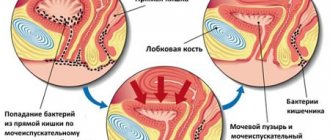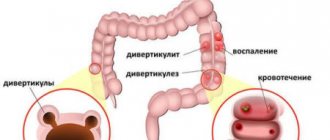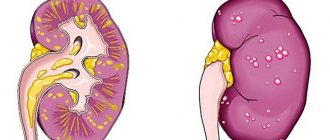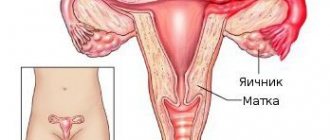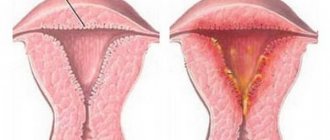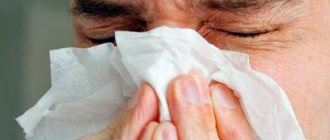Causes of chronic cystitis in women
Chronic cystitis is considered to be a female disease. And medical statistics confirm this - women suffer from this disease much more often than the male population. According to doctors, women in the age group from 18 to 45 years are most often affected. Why is the disease so selective with respect to age and gender? Everything is explained quite simply. Firstly, a significant factor is the anatomical features of the female body. A woman’s urethra is different from a man’s – it is wider and shorter, which makes it much easier for pathogens to enter the bladder. Secondly, women, especially young women, neglect their health, always striving to look attractive. And wearing short skirts and light clothing in the cold season is a dangerous factor that contributes to the development of the infectious process.
Cystitis usually becomes chronic for the following reasons:
· Decreased immunity.
· Insufficient or incorrectly selected treatment for acute cystitis.
· Concomitant inflammatory processes in the genitourinary system, occurring chronically (pyelonephritis, urethritis, vulvovaginitis).
· Presence of sexually transmitted diseases (chlamydia, vaginal candidiasis, ureaplasmosis, mycoplasmosis, trichomoniasis in women, etc.)
Etiology and pathogenesis of chronic cystitis
In the vast majority of cases, cystitis is associated with some kind of infection. The disease is usually caused by bacteria (Gram-negative). But sometimes viruses, protozoa or fungi (Candida) act as pathogens. The initiating factor in the development of the inflammatory process in the bladder can be sexually transmitted diseases or STIs (sexually transmitted infections). As a result, bacterial infections occur.
The female bladder is characterized by high resistance associated with the action of natural antimicrobial mechanisms, which function effectively provided that the woman is healthy. Bacterial invasion cannot be considered the main condition for the occurrence of an inflammatory disease. And numerous medical studies confirm this fact. The development of the infectious process is prevented by the flow of urine during regular emptying of the bladder. With timely urination, the likelihood of infection spreading to the mucous membrane and the development of an infectious process in it is minimized.
It is also known that the bladder mucosa itself has bacteriostatic properties, which are especially strong against E. coli bacteria. Such properties are due to the synthesis of secretory IgA, as well as mucopolysaccharides. In addition, human urine often contains a number of bacterial growth inhibitors (both specific and nonspecific) and some immunoglobulins A and G. It should also be noted that intact urothelium (epithelium covering the urinary tract) has pronounced phagocytic abilities. When cystitis develops in the body, the mechanisms of local and humoral immunity are activated, and antibodies begin to be actively produced.
Chronic infectious diseases are known to be associated with disturbances in the functioning of the immune system. Moreover, in most patients, cystitis appears as a secondary pathology, that is, it can be considered as a complication of any other disease of the genitourinary system.
Cases where relapse is due to persistent infection are not uncommon. But much more often, with a repeated episode of the disease, reinfection occurs. In patients with persistent infection, infectious agents of the same type are present. The disease in such situations can recur very quickly - 1-2 weeks after the course of therapy. By reinfection we mean the repeated development of an infection caused by some other microorganism. The interval between the end of therapy and reinfection is usually several weeks.
As is known, the pathogenesis of chronic inflammatory disease is greatly influenced by transient dysfunction of the immune system, as well as tissue hypoxia. Chronic inflammation is a long-term process that can develop over many weeks and even months. Chronic processes are characterized by the synchronous development of a damaging factor, reactive changes and scarring.
The prerequisite for such chronic inflammation of the bladder is the inability to regenerate after an acute inflammatory process, which is associated with impaired tissue homeostasis. And any chronic disease usually develops as alternating periods of subsidence and exacerbation of pathological phenomena, on which its morphological characteristics depend. Thus, acute cystitis is characterized primarily by vascular-exudative and alterative changes. While subacute and chronic diseases of the bladder are characterized by sclerotic phenomena (proliferation with the formation of connective tissue). As is known, there are no capillary vessels between epithelial cells, therefore their activity is supported by the diffusion of all necessary substances through the intercellular substance and the basement membrane of the underlying connective tissue. Therefore, much depends on the submucosal structures of the bladder wall.
The appearance of a focus of chronic infection is associated with the constitutional characteristics of epithelial tissue and age-related changes in it (which affect cellular stability and metabolic processes). One of the most important factors is increased cellular sensitivity to oxidative stress. At the same time, against the background of hypoxia, there is an increase in the rate of mobilization, as well as division of immature epithelial cells, which is why they do not have time to mature. And the immaturity of the epithelium is known to increase bacterial adhesion.
Treatment methods
Treatment of chronic cystitis is a long and multi-stage process that requires a responsible attitude from both the doctor and the patient. Remember that only if you follow all the necessary recommendations of the urologist, you can forget about the disease for quite a long time. The treatment of pyelonephritis is based on the following principles:
- prescribing broad-spectrum antibiotic therapy in the first few days after diagnosis;
- after the results of bacteriological culture appear and the type of pathogen is identified, replace the medication with a species-specific antibiotic;
- relieving inflammation from the mucous wall;
- relaxation of muscle fibers and elimination of spasm;
- prevention of relapse.
Drug therapy for chronic cystitis
Medicines have a beneficial effect on the course of the pathological process: it is possible to destroy the very cause of the development of the disease by stopping the life cycle of the virus, bacteria or fungus. It would be advisable to use several groups of drugs at once: they will help not only eliminate the pathogen, but relieve accompanying symptoms in the form of pain, pain when urinating and spasms.
All products have indications and contraindications: be sure to read them before taking them. Do not prescribe medications yourself, because only a doctor should determine the dosage.
Table: drugs used to treat cystitis
| Name of drug group | Examples of drugs | Effects of use |
| Antiviral agents |
| inhibit viral reproduction |
| Antifungal agents |
| deactivate mushrooms |
| Antibiotics |
| kill bacterial microorganisms |
| Anti-inflammatory drugs |
| reduce inflammatory swelling of the bladder wall |
| Antispasmodics |
| relieve spasm of smooth muscles, facilitating urination |
| Homeopathic remedies |
| gently influence inflammation, reducing its intensity, increase urine flow |
| Diuretics |
| stimulate the formation of urine in the kidneys and its removal |
Medications - photo gallery
Canephron has antibacterial and diuretic effects
Ibuprofen is a non-steroidal anti-inflammatory drug
No-spa will relieve spasms
Acyclovir is an effective antiviral drug
Monural is a broad-spectrum antibacterial agent
Ketoconazole is an antifungal drug that disrupts the growth and development of pathogenic microorganisms
Furosemide is a drug that provokes increased excretion of water by the kidneys.
Using traditional medicine to treat cystitis
As you know, many people use not only traditional pharmaceutical drugs, but also traditional medicine to treat bladder diseases. They are an excellent addition to the standard treatment regimen. Many folk remedies are much cheaper, easier to prepare and safer than synthetic drugs. But you should definitely take into account that there is no need to cancel antibiotics, antiviral and antifungal agents: only they can eliminate the cause of the disease.
Popular folk remedies:
- Place one hundred grams of frozen cranberries in a saucepan with a liter of boiling water. Cook for half an hour, adding sugar to taste. The resulting cranberry broth should be consumed three times a day, one glass after meals. Cranberry has a disinfecting effect and also helps remove all microbial toxins from the body due to its mild diuretic effect. To achieve the desired result, you need to treat for at least a week.
- Brew a few leaves of St. John's wort in a glass of water, let it brew for fifteen minutes. After the mixture has cooled, drink it before any meal. St. John's wort is a strong disinfectant and a powerful antispasmodic that allows you to forget about unpleasant sensations for a long time. The course of treatment must be continued for at least a month with a break of one day every three days.
- Brew ten large chamomile flowers in hot water and leave to steep overnight. Before breakfast, drink chamomile infusion. This drink has pronounced anti-inflammatory properties, which makes it a universal remedy in the fight against exacerbation of cystitis. You need to drink chamomile for at least a week.
Photo gallery: folk first aid kit for bladder diseases
Cranberry kills microbial pathogens
St. John's wort relieves spasms well
Chamomile reduces swelling and inflammation
Video: treatment of cystitis with folk remedies
Diet for bladder disease
Proper nutrition is the basis for maintaining the human body in good shape. Proteins, fats and carbohydrates entering our body perform not only energy, but also construction functions. During an exacerbation of chronic cystitis, the body especially needs healthy and wholesome food.
Steamed food is very beneficial for the body
How to eat with cystitis:
- Avoid fast food and fast food products: they contain a large number of various additives, salt and concentrates, as well as heavy fats and harmful carbohydrates, which interfere with the body’s absorption of healthy fats and proteins. Convenience foods should also be excluded for the period of treatment.
- Eat lean poultry (chicken, turkey), beef, boiled fish and seafood. They contain enough protein for an adult and avoid overloading the liver and kidneys.
- Add fresh vegetables, fruits, berries and cereals to your diet. This way you can provide your body with a supply of essential vitamins and minerals.
- Avoid carbonated drinks, milkshakes, alcohol, packaged juices and sugary wheys. They create a breeding ground for bacteria due to the large amount of carbohydrates.
Physiotherapy methods for the treatment of cystitis
Physiotherapy is based on targeted impact on the affected area. Medicines eliminate the cause of the pathology and the pathomorphological changes that occur, while physiotherapy stimulates the body’s own reserves to fight the pathogen. Do not underestimate such techniques: despite their apparent simplicity, they are quite effective in the treatment of many diseases.
Table: use of physiotherapy for the treatment of cystitis
| Method name | Operating principle | Main effects of use |
| Mud and algae applications to the bladder area | heat has a beneficial effect on spasmodic areas of the genitourinary system | spasm relief, pain relief |
| Magnetic therapy | the use of magnetic fields of varying degrees of intensity, directed pointwise to the affected area | normalization of urination |
| Electrical stimulation | pulses of low and medium frequency currents stimulate the nerve endings of the bladder | reduction of inflammation |
| Laser therapy | targeted action of low intensity laser radiation | pain relief, normalization of salt balance in the body |
| Iontophoresis | introduction of silver ions into the body in small quantities | reduction of swelling of the bladder wall |
Features of treatment of the disease in men, women and children
For exacerbation of chronic cystitis in men and non-pregnant women, a standard treatment regimen applies: antibacterial, antiviral, antifungal and anti-inflammatory therapy is used in full, taking into account existing contraindications and indications. Girls and women can also take warm baths with essential oils and eucalyptus to reduce the sensitivity of the genitourinary organs. It will be useful to apply a warm heating pad to your stomach. Men are recommended to apply herbal infusions and oils to the urethral area using cotton wool or cotton pads. The male half of the population should not use a heating pad or warm up the pelvic organs: high temperatures negatively affect sperm activity.
Lower back pain is typical for cystitis in pregnant women
Pregnant women, children and adolescents are not prescribed antibiotics unnecessarily: these drugs have a large number of side effects that negatively affect the growing body. Therefore, it is recommended to replace traditional remedies with traditional medicine recipes, follow a diet, follow doctor’s recommendations and attend all physiotherapy procedures. This will help defeat the disease as soon as possible.
Symptoms of chronic cystitis in women
During the period of exacerbation, the symptoms of chronic cystitis are the same as in the acute process. These symptoms may be accompanied by sensations associated with the underlying disease, which caused the transition of cystitis to a chronic form (for example, with atony, the presence of stones in the bladder). The most common complaint of women with acute cystitis is frequent urination, accompanied by pain.
As the process becomes chronic, pain can become constant, and the urge to urinate can be painful in some cases. Typical localization of pain is the pelvic area and pubis. Painful sensations occur or intensify during urination. Sometimes the pain intensifies before urination begins, when the walls of the bladder stretch. But most often, intense pain is observed at the very end of the urination process. At the same time, we must not forget that the feeling of pain and impaired urination can be a manifestation of inflammation developing in the woman’s genital organs.
There may be traces of blood in the urine due to thinning and damage to the walls of the bladder. During an exacerbation, the body temperature may rise.
Symptoms that occur with this disease
In order to consult a doctor in time and begin treatment, it is worth remembering the symptoms that may occur with chronic cystitis. Carrying out early diagnosis of cystitis significantly aggravates the fact that the symptoms at the first stages of the disease may not have sufficiently pronounced signs. However, the disease may not be permanent, and its symptoms and all sorts of signs may appear in a short period of time (exacerbation), and then quickly disappear. Accordingly, with chronic cystitis with a latent form of progression, women may not have any complaints, and inflammation is detected only when an endoscopic examination is prescribed. The period of exacerbation of chronic cystitis can progress, causing acute or subacute inflammation. At the same time, everyone can see such signs as frequent urination, which can be accompanied by cutting, pain, and burning. If a woman has particles of blood in her urine, this is the first signal of damage to the mucous membrane of the bladder and its inflammation. At a complex stage of the above disease, there is a constant feeling of a full bladder, and even after emptying, the feeling does not disappear.
Diagnosis of cystitis in women
Conducting an accurate diagnosis of chronic cystitis is not an easy task. In such cases, they resort to a number of clinical and paraclinical methods, and in addition, doctors are required to be able to carefully analyze the data obtained.
At the clinical stage of the examination, the doctor examines the patient’s medical history, paying special attention to information about the genital organs. It is important to conduct a speculum examination to exclude urethrohymenal adhesions and urethral vaginization.
The basic diagnostic stage involves the use of laboratory methods. A bacteriological analysis of urine and a study of the sensitivity of flora to antibiotics are mandatory. Even at this stage, an ultrasound examination (for some indications, x-ray) of the pelvic area, as well as the upper urinary tract, is performed. In addition, it is very important to find out whether the patient suffers from an STI. The standard criterion for bacteriuria is 105 CFU per 1 ml (in the middle portion of urine). A study of bacteriological cultures in patients with recurrent cystitis showed this result in only 21% of cases. Therefore, when examining patients with cystitis, it is advisable to take a lower value as a diagnostic criterion - 103 CFU per 1 ml.
At the last stage of diagnosis, endoscopy is performed; this study is mandatory. Cystoscopy is used to determine the reasons why cystitis has become chronic. It is worth noting that the methodology is somewhat subjective. The accuracy of the result depends on the specialist’s interpretation of the visual data. The situation is complicated by the fact that against the background of a chronic inflammatory process in epithelial tissue, pathological changes associated with precancerous conditions can occur: hyperplasia, dysplasia and metaplasia. Therefore, today many doctors declare the need for such a method as multifocal biopsy. This will help give a more accurate assessment of the processes in the walls of the bladder.
The optimal number of biopsy samples is 8-15. However, some experts question the feasibility of conducting random biopsies. After all, a biopsy is a traumatic procedure that can aggravate inflammation, and sometimes (though very rarely) it even leads to a serious complication - bleeding and perforation of the bladder.
A modern diagnostic method that allows one to distinguish inflammatory phenomena from neoplastic processes is optical coherence tomography. One of its varieties is cross-polarization OCT. With the help of such tomography, you can clearly study the condition of the mucous membrane of the bladder, as well as submucosal tissues. OCT provides a cross-sectional image of the body's structures (resolution up to 10-15 µm). The research is carried out in real time. The operating principle of OCT is based on the fact that interstitial structures have different optical properties, due to which an optical image of the area under study is created. Cross-polarization OCT provides a more accurate picture, since some elements of the layered structure (for example, collagen) have the property of scattering radiation both in the main polarization and in the orthogonal one.
Clinical studies have shown that when diagnosing bladder neoplasia, OCT has high sensitivity (up to 98-100%), and the specificity of the method is 70-85%. The use of optical imaging technologies for the diagnosis of bladder diseases has great promise. This technique helps to differentiate chronic cystitis from other pathologies that have similar symptoms without performing a biopsy. In the images obtained using tomography, it is possible to clearly identify foci of epithelial proliferation, as well as areas with altered structural organization (fuzzy/uneven borders of the epithelium and submucosal structures). Patients with such results should be classified as a special group (they should be under medical supervision due to the increased risk of malignancy).
If OCT shows that the epithelium of the bladder mucosa is too thin or atrophic, it can be assumed that the patient has a lack of estrogen. Such patients are referred to an appointment with a gynecologist. In postmenopausal women, such changes can lead to urogenital disorders. If chronic cystitis has been developing for a long time, CP OCT gives a picture of obvious thickening of the submucosal structures with high contrast, which is a sign of the development of sclerotic phenomena.
So, the tomographic method for diagnosing bladder diseases gives doctors the opportunity to accurately determine the nature of the pathology and, based on the data obtained, select a suitable treatment regimen for the patient.
Diagnostics
The success of the chosen treatment method depends 95% on the process of diagnosing the disease. A competent doctor carefully studies the patient’s complaints, conducts a conversation, and obtains the necessary information. Then they assign:
- General analysis of urine and blood.
- Bacterial examination of urine.
- Instrumental examination.
- Taking a smear from the urethral canal.
Women need to additionally visit a gynecologist who will examine the vagina and take a smear. This way you can identify the presence of sexually transmitted diseases that can cause cystitis.
Treatment prescribed for chronic cystitis in women should be agreed upon with a gynecologist and endocrinologist after examination and appropriate tests.
Treatment of chronic cystitis in women
Treatment of patients diagnosed with chronic cystitis is associated with a number of difficulties and problems. In some cases, therapy does not bring good results, and the prognosis of the disease may be unfavorable. The ineffectiveness of treatment is primarily due to the fact that doctors are not always able to determine what exact cause led to the development of cystitis. Caring for such patients requires the doctor to have deep knowledge in various fields of medicine (gynecology, neurology, immunology).
At the stage of development of the disease, morphological manifestations are ahead of clinical ones, that is, structural changes occur first, and then the function of the organ is disrupted. And during recovery, the function first returns to normal, and then the damaged structure begins to recover. Only mature epithelial cells are resistant to pathogenic microorganisms. And with a moderately differentiated cell ultrastructure, the protective capabilities of the epithelium are reduced.
The main method of treatment (as well as prevention) of chronic infections that are prone to recurrence is etiotropic antibacterial courses (7-10 days each). It takes at least 3 weeks for the epithelial layer to completely return to normal. Thus, if pathogenetic therapy is not long enough, there is a risk of relapse during reparative processes after a previous episode of the disease. This will lead to negative changes - increased collagen formation, discorrelations, sclerotic processes in subepithelial structures, which play a critical role in the homeostasis of the bladder mucosa. In such situations, a vicious circle is inevitable: inadequate therapy – chronic process – changes in submucosal structures – tissue hypoxia – incomplete regeneration of the epithelial layer – exacerbation of the inflammatory process.
Treatment of women with chronic recurrent cystitis:
· Etiological.
Patients undergo courses of antibacterial therapy.
· Pathogenetic.
Aimed at eliminating anatomical pathologies, improving immune function, normalizing microcirculation and hormonal levels. In addition, pathogenetic treatment includes therapy for STIs, as well as gynecological diseases of an inflammatory and dysbiotic nature.
· Preventive.
Antibacterial drugs, plant-based diuretics.
For more information about treatment methods, medications, dosage and duration of treatment, read the article: “Treatment of cystitis in women.”
Prognosis and complications of the disease
Cystitis is a rather unpleasant disease that causes temporary disability in any person. Sick leave for pathology is given for a period of one week to a month. Unfortunately, the disease is prone to relapses: this is why it is so important to complete the initial course of treatment. Cystitis is not a contraindication to pregnancy, but its improper treatment can provoke complications in its course: a woman becomes more vulnerable to the development of pathogenic microflora.
The main complications of the disease include:
- the occurrence of urolithiasis;
- formation of cysts;
- increased risk of malignant tumors;
- development of polyps;
- urethritis;
- pyelonephritis;
- vesicoureteral reflux;
- vesicopelvic reflux;
- formation of pelvic abscess, phlegmon;
- transition of the inflammatory process to neighboring organs (prostatitis, inflammation of the seminal vesicles in men, endocervicitis in women).
Prevention of chronic cystitis in women
— If young women with an active sexual life use spermicides as contraception and at the same time they experience frequent relapses of chronic cystitis, then their use should be abandoned, since spermicides destroy lactobacilli, which prevent the colonization of the vagina by uropathogens.
— After sexual intercourse, women should use local antimicrobial agents.
- It is not allowed to endure for a long time; the bladder must be emptied as often as possible.
— It is necessary to maintain personal hygiene of the genital organs.
— Taking medications and herbal medications.

